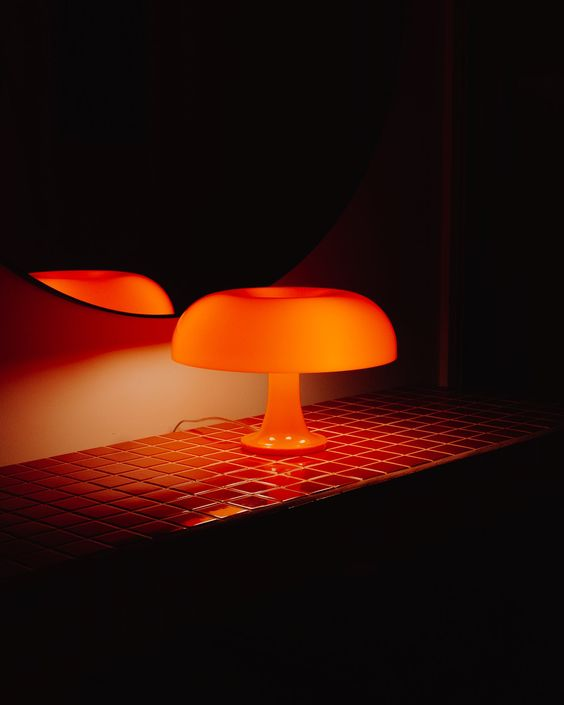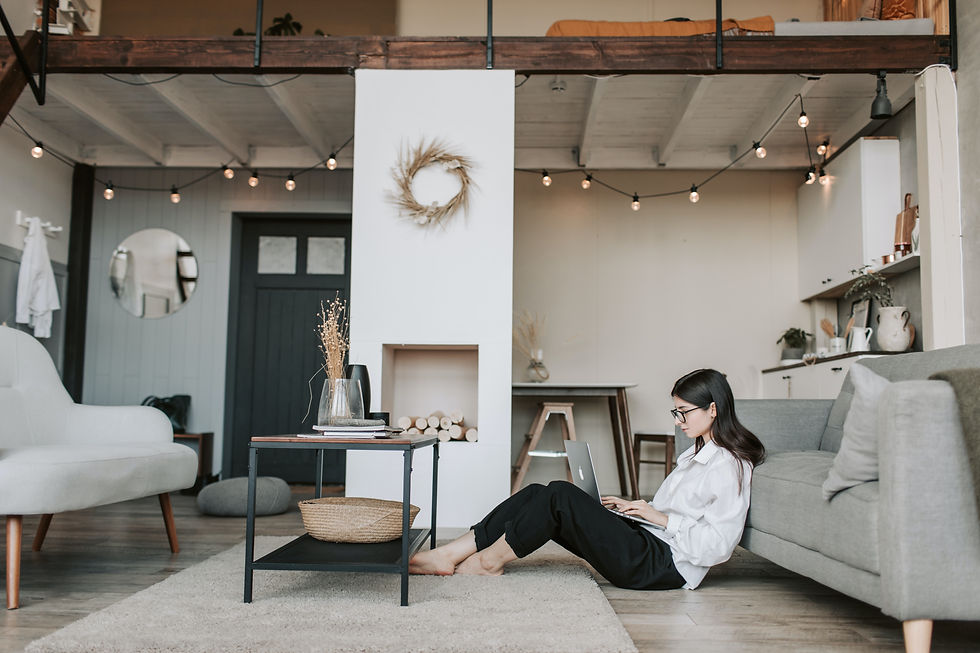How to light your living space
- MVAA

- Jan 30, 2022
- 4 min read
Updated: May 18, 2024
Good lighting can make or break a scheme but is often an afterthought. The best schemes include multiple layers of lighting, all doing their bit to create the desired levels of illumination and flexibility.
WHY IS GOOD LIGHTING SO IMPORTANT?
The right lighting can completely change the look and atmosphere of a room and it's important to recognise how lighting makes us feel: 'It affects us both physically and psychologically. Good lighting can improve our mood and energy levels, while poor lighting can contribute to depression and affect concentration, sleep, appetite and even our eyesight.' Getting the balance between natural light and fitted lamps can be tricky, so think about what exactly you need.

A lamp creates mood, through colour, temperature, and highlighted accents.
WHAT ARE THE MAIN TYPES OF LIGHTING?
There are three distinct types of lighting: task, ambient and accent. It will help you to choose the correct lighting if you understand the difference between these: task lighting, such as desk lights or spotlights, has a practical purpose; ambient lighting - wall lights, table and floor lamps, and dimmable ceiling lights - creates constant lighting, while accent lighting captures features, creates drama or alters atmosphere.

Accent lighting, only illuminate the areas you want to draw attention to.
AND DO I NEED THEM ALL IN MY LIVING SPACE?
'Not necessarily!' The living space is where we unwind after a day's work, so bright and cool lighting isn't what we’d be looking for. For a relaxing atmosphere, warm lighting layered through with table lamps and wall lights will create the perfect living space. This will allow you to set the tone according to the mood and time of day. A pendant will provide overhead lighting and create a focal point, while floor and table lamps give an ambient glow during the evenings and help anchor the scheme.
WHAT ABOUT AN OVERHEAD LIGHT?
Investing in a feature ceiling light helps to transform your space in two ways: it draws the eye upwards and opens the space up, and also tricks the eye into thinking that the space is bigger than it is. It's not always necessary but comes down to design preference and how you plan to use the room.
DO ALL LAMP SHADES IN A ROOM NEED TO MATCH?
No, unless they are a matching pair. For wall lights though, it's best to match. It's important to work out what kind of light you want. The weight and colour of the shade will impact the amount and tone of light emitted. If you want brightness, consider mesh shades or glass. Or dispense with shades and go for exposed bulbs.
WHERE SHOULD FLOOR LAMPS BE PLACED?
There's no hard and fast rule, but generally to the side of or slightly behind armchairs or sofas. For a contemporary living room, an exaggerated curved floor lamp will add a real design statement over the sofa or central coffee table. For a classic look, tripod floor lamps are a great option.
HOW BRIGHT SHOULD LAMPS BE?
Provided you have as many layers of light as possible, no single source of illumination should be working too hard. When used in conjunction with dimmable controls, it's a great idea to use as bright a source as the fitting will allow, then set it with the dimmer switch. Lighting schemes go wrong when they're too dependent on one source and no means to adjust the brightness.
WHAT ABOUT WALL LIGHTS?
These are a great addition to a living room. They act as a much softer alternative to an overhead light and add visual interest to the walls. Wall lights are great for an ambient tone in a room. They create a low level of light and bring out features in a room. It's all about balancing the layers.

There’s no point installing beautiful wall lights f they highlight a badly plastered wall.
HOW DO I USE LIGHTING TO CREATE A MOOD?
Dimmers can give you good control of light levels in a room. Whether they're wall-mounted dimmable switches or touch lamps with three settings, being able to dim your lights or make them brighter makes for a comprehensive set up. Warming up the colour temperature of a light will create depth and a more atmospheric mood, whereas a cooler light temperature will bring energy levels back up in the room. Successful schemes include lots of layers and the flexibility to individually control each layer, by either dimming or turning on and off.

Layered lighting helps create the perfect space.
CAN I MAKE AN OPEN-PLAN SPACE FEEL COSIER?
Yes, by creating light and shade areas, you can have cosier spaces within a large area. Mix up the layers of light, highlight architectural features with accent lighting and don't over-light areas that don't need illuminating. Look at your room and decide where function lighting is needed, and mood lighting is required. There'll be some crossover between the two, so dimmer switches will give flexibility to switch between function and mood lighting.

The right lighting can complete an entire scheme.
ANY DOS AND DON'TS?
Have different circuits so you can have different moods. Create interesting layers through separate light sources such as lamps, too. There's still plenty you can do without major work - a new shade, different bulb or a floor lamp can all change the way a space feels. Don't feel overwhelmed by choice or feel persuaded by what is trending if it doesn't speak to you. Whatever your style, choose lighting solutions that work for you and your home and as long as you are happy and confident with your choice, you'll never fall out of love with it.


